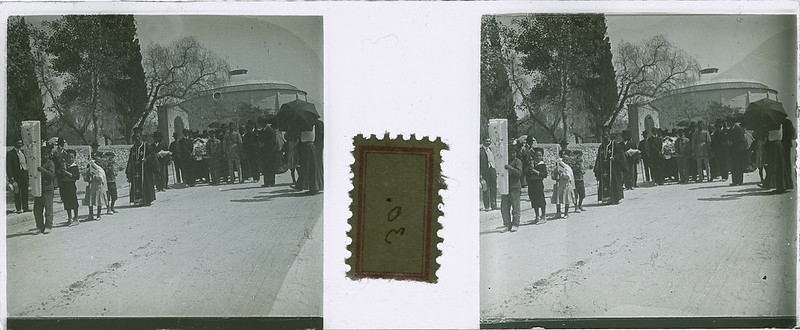Photographic journey through the Mediterranean
IGNACIO MIGUÉLIZ VALCARLOS
Chair OF NAVARRESE HERITAGE AND ART
An interesting collection of photographs from the early 20th century is kept in a private collection in Pamplona, which we are making accessible with this virtual exhibition , incorporating it into the public collection of this art in Navarre. This collection is made up of 128 images, of which we show only a selection of 50. The shots show an interesting photographic report of a pilgrimage journey around the Mediterranean at the beginning of the 20th century. Through these photographs we can see the pathway that took them to the current Greece, Turkey, Cyprus, Israel, Egypt and Italy, making stopovers that allowed the travellers to visit different towns and places. These photographs were taken by amateur photographers during the course of the voyage and were later compiled, making it one of the first and most complete examples of amateur photography in Navarre.
The pathway of this trip was conceived as a tour of the eastern Mediterranean, combining a dual purpose: on the one hand, tourism and, on the other, religion. From the point of view of the former, the travellers had the opportunity to visit distant cities and places such as Athens, Istanbul, Patmos, Rhodes, Cyprus, the towns of the Holy Land and Cairo, as well as western cities that were already part of their visual and cultural baggage, such as Naples, Rome and Venice; while from the point of view of the latter, that of pilgrimage, they travelled to towns linked to sacred history that formed part of the Christian mythical imaginary, goal the main purpose of the trip. Thus, not only did they visit places such as Haifa, the Carmel and Tabor mountains, Nazareth, the Sea of Galilee, Jaffa, Bethlehem and Jerusalem, but also the different religious landmarks linked to the biblical tradition that were located in these towns. Both options were mixed in continuity, tourist visits to unknown cities were combined with the religious links that many of these towns had.
The trip enjoyed every possible comfort, being made by boat, which also served as a place to stay at accommodation , except at certain points along the route, when longer stays were planned in certain towns, such as Jerusalem or Cairo, where the travellers stayed in hotels. During the journey, several travellers, equipped with cameras, took photographs of the places they visited: images of the landscapes they travelled through, of the cities they visited, with urban views and monuments, or ethnographic images, portraying the inhabitants of these countries and cities, many of them reflecting the exoticism that all these places and people meant to these travellers.
The preserved images are positive photographs in stereoscopic format on dry gelatin-bromide plates. The images are anonymous, as they were taken by different participants in the voyage, subsequently collected on the ship and, once the copies had been developed, made available to those travellers who wished to have a souvenir of the voyage they had made. In fact, these photographs were projected on the ship to liven up the sea crossings and the nights on board. This is where the compiler of this series comes into play, who, although he was not the author of the series, gave it a special vision by selecting certain photographs to the detriment of others. In this way, and as if it were a travel album in vogue throughout the 19th century, our collector put together a series of photographs that interested him and that reflected the journey he had made, that reminded him of the trip or the places he had visited. It should not be forgotten that for the mind of a man from Pamplona at the beginning of the century, all these images would be totally new and exotic visions, never seen before.


